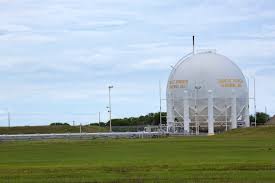EU must take on its methane problem before turning to hydrogen

Hydrogen separated from water using renewable electricity — so called ‘green hydrogen’ — might be economically viable someday. But for now, the cheapest way to make hydrogen is by converting natural gas. Natural gas is a major source of carbon dioxide emissions; it also consists mostly of methane, which is itself a greenhouse pollutant, with over 80 times the near-term warming power of carbon dioxide.
When it comes to climate change and achieving a net-zero carbon future, natural gas solves nothing unless both carbon dioxide and methane emissions associated with its production, distribution and use are fully controlled. Opening up a whole new market for converting gas to hydrogen without clearly establishing how those emissions will be dealt with would only make a serious problem much worse.
The European Commission recently released two major energy policy strategies in which methane and role of natural gas are at issue.
Two new strategies
First is the Commission’s sweeping Sector Integration strategy, which brings together all elements of the energy puzzle — utilities, buildings, industry and transport — under a single, unified framework designed to replace fossil fuels with energy efficiency and renewable electricity. Where direct electrification or renewables aren’t feasible, the plan would look to other solutions, including hydrogen.
The second new strategy provides a detailed vision for hydrogen, describing it as “essential” to meeting the 2050 carbon neutrality goal and EU obligations under the Paris Agreement. It will be administered by a Hydrogen Alliance committee (whose board is stacked with oil and gas executives). The stakes behind the plan are hardly trivial: an estimated €180-470 billion in new EU hydrogen production capacity, and hundreds of millions more to adapt end-use capabilities.
The Commission strategy draws careful distinction between “clean” or “renewable” versus fossil-based hydrogen, and notes the high life cycle greenhouse emissions of hydrogen made from gas. Yet the document contains only a single passing reference to methane — suggesting that a crucial piece of the climate equation has not yet received the attention it demands.
The EU methane strategy
Fortunately, as the hydrogen strategy notes, the Commission is expected to release a new methane strategy in the fall. Getting these rules right is an absolute prerequisite before any hydrogen subsidies can possibly move forward. Which is precisely why nonprofits, investors and even forward-thinking companies within the industry itself have called for methane emissions limits for all gas sold in the EU market.
In May, European oil and gas producers joined EDF and others on a set of recommendations for limiting methane emissions from the gas supply. Major institutional investors representing $4.5 trillion in assets under management followed up with a call for ambitious and aligned EU methane policies, adding that standards must be backed by robust emissions measurement and accounting practices. Meanwhile, a broad group of environmental nonprofits organized through Climate Action Network Europe has issued a common call or decisive action.
Pivotal moment
Top European producers like Shell, BP, Equinor, ENI, TOTAL and Repsol have pledged to reduce the amount of methane coming from their supply chains. Some companies have supported methane regulations in Europe and elsewhere. Some are making progress on emissions accounting and disclosure. But as a whole, the industry still has a long way to go to make good on their promises.
That has not stopped many of these same producers from enthusiastically promoting new hydrogen subsidies and talking up their role in a climate-neutral world. These subsides, of course, would be a valuable lifeline for an industry that is betting its immediate future on natural gas and struggling to find its footing in a net-zero carbon future.
Strong EU methane standards are the only way to make sure companies deliver the emission reductions we need — and to which they have committed — before opening up a brand new market for natural gas that could, if not properly managed, make problems worse instead of better.
Europe’s duty to lead
Hydrogen as an energy resource at a commercial scale remains an untested concept (and there are many skeptics). It is perfectly reasonable to explore all possible zero-carbon technologies today, because tomorrow we are going to need every option we can get. However, it doesn’t make sense to subsidize companies to develop hydrogen, with all its challenges, when they have yet to solve a problem they can already fix using proven, low-cost measures at their disposal right now. At the very least, one should be conditional on the other.
As the largest market for internationally traded gas, Europe has both the leverage and responsibility to lead on methane. As the bloc lays down the most ambitious international climate goals via the European Green Deal, action on methane emissions is essential to meeting Europe’s decarbonization targets.
In the legislation that follows, EU and national decision makers must take concrete steps to ensure that oil and gas companies solve their current methane problem before opening up the vast new set of potential challenges associated with large-scale production, transport and storage of hydrogen.











